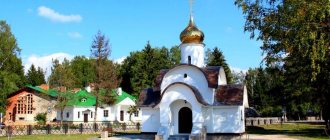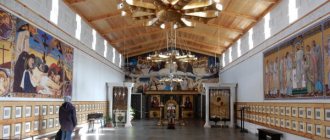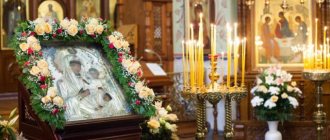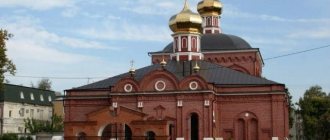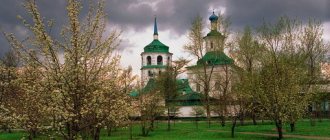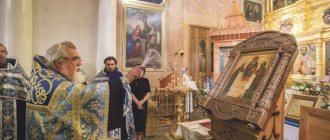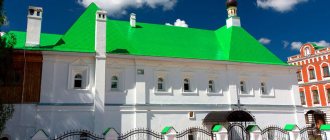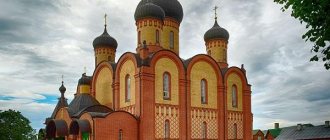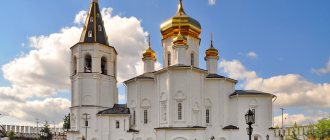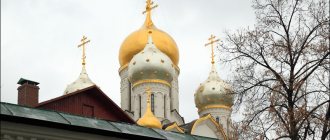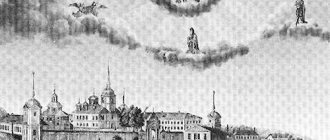Mir
Russia Voronezh region Voronezh Alexievsky Akatov convent Map is loading…
{"format":"leaflet","minzoom":false,"maxzoom":false,"limit":50,"offset":0,"link":"all","sort":[""], "order":[],"headers":"show","mainlabel":"","intro":"","outro":"","searchlabel":"\u2026 \u0441\u043b\u0435\ u0434\u0443\u044e\u0449\u0438\u0435 \u0440\u0435\u0437\u0443\u043b\u044c\u0442\u0430\u0442\u044b","default":"","import-annotation":false,"width ":"auto","height":"350px","centre":{"text":"","title":"""link":"","lat":51.67470999999999747842593933455646038055419921875,"lon": 39.22316099999999750025381217710673809051513671875,"icon":""},"title":"","label":"","icon":"","lines":[],"polygons":[],"circles":[ ],"rectangles":[],"copycoords":false,"static":false,"zoom":8,"defzoom":14,"layers":["OpenStreetMap"],"image layers":[] ,"overlays":[],"resizable":false,"fullscreen":true,"scrollwheelzoom":true,"cluster":false,"clustermaxzoom":9,"clusterzoomonclick":true,"clustermaxradius":80, "clusterspiderfy":true,"geojson":"","clicktarget":"","showtitle":true,"hidenamespace":false,"template":"","userparam":"","activeicon": "","pagelabel":false,"ajaxcoordproperty":"","ajaxquery":"","locations":[{"text":"\u003Cb\u003E\u003Ca href=\"/palomnik/%D0% 90%D0%BB%D0%B5%D0%BA%D1%81%D0%B8%D0%B5%D0%B2%D1%81%D0%BA%D0%B8%D0%B9_%D0%90% D0%BA%D0%B0%D1%82%D0%BE%D0%B2_%D0%B6%D0%B5%D0%BD%D1%81%D0%BA%D0%B8%D0%B9_%D0% BC%D0%BE%D0%BD%D0%B0%D1%81%D1%82%D1%8B%D1%80%D1%8C\» title=\»\u0410\u043b\u0435\u043a\u0441\ u0438\u0435\u0432\u0441\u043a\u0438\u0439 \u0410\u043a\u0430\u0442\u043e\u0432 \u0436\u0435\u043d\u0441\u043a\u0438\u0439 \u 043c\u043e\u043d\u0430\u0441\ u0442\u044b\u0440\u044c\»\u003E\u0410\u043b\u0435\u043a\u0441\u0438\u0435\u0432\u0441\u043a\u0438\u0439 \u0410\u043a\u0430\u 0442\u043e\u0432\u0436\ u0435\u043d\u0441\u043a\u0438\u0439 \u043c\u043e\u043d\u0430\u0441\u0442\u044b\u0440\u044c\u003C/a\u003E\u003C/b\u003E","title":" \u0410 \u043b\u0435\u043a\u0441\u0438\u0435\u0432\u0441\u043a\u0438\u0439 \u0410\u043a\u0430\u0442\u043e\u0432\u0436\u0435\u043d\ u0441\u043a\u0438\u0439\u043c \u043e\u043d\u0430\u0441\u0442\u044b\u0440\u044c","link":"","lat":51.67470999999999747842593933455646038055419921875,"lon":39.223160 99999999750025381217710673809051513671875,"icon":""}],"imageLayers": []}
51.67469; 39.223284
Russia, Voronezh, Osvobozhdeniye Truda street, 1B
Voronezh, Voronezh region 394036
Russia
Telephone:
(0732) 55-18-24.
Alekseevo-Akatov convent
(originally for men) is one of the oldest monasteries in the Voronezh region. Located in the private sector near the reservoir, not far from the Chernavsky Bridge.
History[edit]
The Alexievo-Akatov Monastery, one of the oldest monasteries in the Voronezh diocese, was founded in 1620 according to the vow of the townspeople, in gratitude for the victory granted to them over the numerous army of Lithuanians and Cherkasy. This battle took place on the day of remembrance of St. Alexy, Metropolitan of Moscow and All Russia, the Wonderworker, to whom the temple of the monastery was dedicated. The founder of the monastery and the first abbot was Abbot Kirill, who twenty years earlier (in 1600) founded a monastery in Voronezh in honor of the Dormition of the Blessed Virgin Mary. The monastery was built on the principles of desert living, as evidenced by an ancient document - the so-called tale of Abbot Theodosius, in which the monastery is referred to as “the new desert of Oleksei Metropolitan of Moscow the Wonderworker.” In a short time, a church (“tree of dumplings”), the abbot’s cell and four cells for the elders, also wooden, were built.
Initially, the brotherhood consisted of seven monks, including the abbot (history has preserved their names: hegumen Kirill, the “black priest” Joseph, the elder monks Savvaty, Theodosius, Abrahamy, Nikon and Lavrenty). Subsequently, the number of inhabitants increased somewhat, especially after the abolition of the Assumption Monastery, which, during the short but memorable period of Emperor Peter I’s stay in Voronezh, found itself in extremely cramped circumstances, in close proximity to shipyards. Throughout the 17th – early 19th centuries. The Alexievo-Akatov Monastery remained the only men's monastery in the city. From that time on, its abbots had the rank of archimandrite.
The name of one of them - Archimandrite Nikanor - is associated with the appearance in the Alexievsky Monastery of its main shrine - the miraculous icon of the Mother of God “Three-Handed”, brought from the New Jerusalem Resurrection Monastery, where Archimandrite Nikanor began his monastic path and in recent years was rector. This icon, which was a copy of an ancient image, was especially loved by the people of Voronezh, who believed in its miraculous power.
During the reign of Empress Catherine II, who sharply reduced the number of monasteries, the Alexievsky Monastery was classified as second class. According to his staff, he was supposed to have 17 people. Eight acres of land and a lake for fishing were left behind the monastery.
Information about the Alexievo-Akatov Monastery in the 18th–19th centuries concerns the more external, official side of its life. The most famous are the works of the abbots in the construction and beautification of the monastery, their spiritual and educational activities (since 1796, this position traditionally began to be combined with the post of rector of the theological seminary; since 1742, the monastery was under the control of the suffragan bishops of Ostrogozh). Archimandrite Hilarion (Bogolyubov) compiled “Description of the Voronezh Alekseevsky Akatov second-class male monastery” (1859), the most complete for its time.
The end of the 19th century was marked by a special flourishing of educational activities within the walls of the monastery, largely thanks to the works of its rector, His Eminence Vladimir (Sokolovsky), who had extensive missionary and pedagogical experience. At this time, the Diocesan School Council and the Diocesan Committee of the Orthodox Missionary Society operated at the monastery, a teacher’s and regency school was located, Sunday religious and moral readings were held with light paintings, and a wonderful boys’ choir was created (Vladyka Vladimir himself paid a lot of attention to their training).
Throughout the 18th–19th centuries, the monastery continued to be built and decorated. In 1804–1819, a two-story stone church was built, which has been preserved and is now operational. The lower church was consecrated in 1812 in the name of St. Alexy (currently in honor of the Vladimir Icon of the Mother of God), the upper one in 1819 in honor of the Resurrection of Christ (now in the name of St. Alexy). Construction was carried out according to the design of the provincial architect I. Volkov with donations from the merchant widow Evdokia Anikeeva. The former, also stone, temple was dismantled in the 70s of the 19th century. The bell tower that remains from it is currently the oldest building in Voronezh (1674).
The fiery trials that befell the Russian Church in the twentieth century did not escape the Alexievsky Monastery. Previously little-known, in the 1920s, when many churches in Voronezh were closed or occupied by schismatic renovationists, for some time it became the center of the spiritual life of the city, the seat of the diocesan bishop. Metropolitan Vladimir (Shimkovich), a humble elder-archpastor, a staunch defender of Orthodoxy in the face of the atheistic authorities, lived and was buried here in 1926.
In the summer of 1931, the Alexievo-Akatov Monastery was closed. All the property of the monastery, liturgical utensils, revered icons (including the miraculous image of the Most Holy Theotokos “Three-Handed”), library and archive were confiscated and disappeared without a trace. The temple and other monastic buildings were used in various, often inappropriate, ways. At various times there were residential apartments, art workshops, warehouses, and stables here. The graves in the monastery cemetery were subjected to desecration, which was subsequently razed to the ground and overgrown with weeds. Above this sad picture of desolation rose an ancient bell tower, which was taken under protection as a historical monument back in the 70s and partially restored in 1986.
Restoration work began here in 1990, after the transfer of the monastery to the Voronezh diocese. With the blessing of His Holiness Patriarch Alexy II, a women's monastery was opened on this site. On November 4, 1990, on the day of the celebration of the Kazan Icon of the Mother of God, the first Divine Liturgy was served in the church of the renovated monastery. On January 4, 1992, the first tonsure of ten sisters was performed, including nun Varvara (Sazhneva), who became abbess in April of the same year and was elevated to the rank of abbess in April 1993.
Monastery Cemetery
There is a cemetery in the southern part of the churchyard. In the old days, monks of the monastery and noble nobles were buried here. In 1772, a ban on burials near parish churches came into force. Because of this, the cemetery of the Alekseevo-Akatovo Monastery began to grow rapidly.
The governor of Voronezh (winter 1773) is buried on the territory of the cemetery, as evidenced by the inscription on the monument. In 1784, the funeral of Father Palladius, a teacher at the monastery seminary, took place.
Use of the cemetery continued into the 19th and 20th centuries. Tulinov (leader of the province), Labzin (zemstvo secretary), Tsvet (scientist) and others found eternal peace here. As part of the anti-church policy, the cemetery was demolished by the Soviet authorities. In the early 90s, a symbolic necropolis was created on the territory of the destroyed shrine.
Current state[edit]
Currently, more than fifty sisters serve the Lord in labor and prayer at the monastery. Several nuns constantly live and work in the monastery's farmstead, located near the city, where they lovingly care for cows, calves and poultry. There is a plot of land in the countryside where the sisters go for seasonal work. Since 1994, there has been a children's Sunday school in the monastery, where children from 5 to 15 years old study. The sisters teach them the Law of God, the Church Slavonic language, the basics of painting and church singing.
On the territory of the monastery, all surviving buildings (temple, bell tower) were restored, cell buildings, a refectory, a chapel for holy prayers and a chapel in honor of the New Martyrs of Voronezh with mosaic icons were built. To replace the lost temple paintings, new ones were made. First, a group of Voronezh icon painters under the leadership of Vadim Gladyshev painted the lower church. For several years, work continued on the painting of the upper church, made using the fresco technique by Yelets icon painter Vladimir Marchenko. Upon completion of the work, the temple was re-consecrated by His Eminence Sergius, Metropolitan of Voronezh and Borisoglebsk, on the day of remembrance of St. Anthony (Smirnitsky), glorified as a locally revered saint in 2003.
In 1999, the Vvedenskaya Church (formerly a parish church before its closure), one of the most beautiful churches in Voronezh, was transferred to the Alexievsky Monastery. Currently, the monastery of St. Alexis receives many pilgrims who come from different places to venerate the Voronezh shrines.
Schedule of services
Divine services within the walls of the Alekseevo-Akatovo convent are held daily.
- On weekdays and Saturdays, liturgies are celebrated 3 times: morning (07:30) and 2 evenings (16:00 and 17:00).
- On Sunday there are 2 services in the morning: early (06:30) and late (08:30) liturgies. Evening services on Sunday are no different from those held on weekdays.
For major religious and patronal holidays, a separate schedule of services is drawn up. Liturgy hours may change, so the holiday schedule must be found out in advance.
Shrines[edit]
- Icon of the Mother of God “Life-Giving Spring”
- Icon of the Great Martyr and Healer Panteleimon
- Icon of St. Pitirim of Tambov
- Icon of Saints Mitrofan of Voronezh and Tikhon of Zadonsk
- Image of the Mother of God “Consolation in Sorrows and Sorrows”
- Kasperovskaya Icon of the Blessed Virgin Mary
- Icons with particles of the relics of the Holy Martyr Peter, Venerable Chariton the Confessor
- A reliquary with particles of the relics of Saints Mitrofan and Tikhon of Voronezh and Saints Cyril and Mary of Radonezh
- Shroud from the tomb of St. Mitrofan
Patronal holidays
Alekseevo-Akatov Convent honors the following patronal feast days:
- February 25 – death of Saint Alexei of Moscow;
- June 2 – discovery and transfer of the relics of Saint Alexei;
- June 3 – icon of the Mother of God of Vladimir (in memory of the salvation of the city of Moscow during the Khan’s invasion of 1521);
- July 6 – icon of the Mother of God of Vladimir (in memory of the salvation of the city of Moscow during the Khan’s invasion of 1480);
- September 8 – Presentation of the icon of the Mother of God (salvation during the invasion of 1395);
- October 18 – Moscow Council of Saints: Alexy, Hermogenes, Jonah, Philip, Peter;
- August 12 – Voronezh Confessors and New Martyrs.
Devotees of the Faith
There was a house nearby that still exists today. Hieromartyr Peter (Zverev) lived in it. He did not live there long, about a year, but his service in the city wrote bright pages in the history of the city. At the monastery, Vladyka often conducted divine services and preached. Many believing people gathered to listen to him, who loved Archbishop Peter as a true servant of the Orthodox faith, its statutes and canons. At that time, the monastery abbot was Archimandrite Innocent (Beda). He was a very close person to the Vladyka, his companion and cell attendant. They were arrested together and then exiled to the Solovetsky camp, where they died. First, in 1927 - Hieromartyr Peter, and in 1928 - Archimandrite Innocent.
The Mother of God Icon “Three-Handed”
The name of Archimandrite Nikanor is associated with the appearance in the future convent of Voronezh of the monastery’s shrine - the miraculous icon of the Mother of God “Three-Handed”, representing a copy of an ancient image. She was brought from the New Russian Resurrection Monastery, where the archimandrite began his monasticism, where he was abbot in recent years. This icon is especially loved by Voronezh residents; they have always believed in its miraculous power.
But during the reign of Empress Catherine the Great, due to her church reforms, the number of monasteries decreased. Alekseevsky Monastery was classified as second class. His staff could only include 17 people. The monastery was left with 8 acres of land and a lake for fishing.
How to get to the Alekseevo-Akatov Monastery in Voronezh
Akatov Monastery in Voronezh is located at: St. Liberation of Labor, 1. The walk from Petrovsky Square to the monastery is 1 km and takes 15 minutes. There are two alternative routes to the Akatov Convent from the nearest stops with the maximum number of passing buses.
- From the Manezhnaya bus stop, walk across the street. Sacco and Vanzetti and st. Liberation of labor. (9 minutes 750 meters).
- From the Chernavsky Bridge bus stop, walk along the Massalitinova embankment, across the street. Dostoevsky, st. Krestyanskaya and st. Liberation of labor. (12 minutes 960 meters).
Brethren
We know almost nothing about how the monastery brethren lived, about their prayerful works, secret exploits and consolations. However, the revival of the monastery almost a hundred years later testifies that their labors and prayers were not in vain. The life of the monks was hidden in Bose and hidden from human eyes.
The terrible trials that befell the Russian Orthodox Church did not spare the Akatov Monastery either. When many churches were closed or taken over by renovationists. Previously little-known in the 20s, the Akatov Monastery became the center of the spiritual life of the city and the seat of the diocesan bishop. In 1926, Metropolitan Vladimir (Shimkovich), an archpastor, a humble elder who courageously defended Orthodoxy against the atheists of the existing government, also began to live here.
Arrests
In the 30s, the last rector of the Alekseevo-Akatov Monastery, Archimandrite Tikhon (Krechkov), had to accept the same cup of Christ’s suffering. He was arrested on false charges of counter-revolutionary activities and shot in the vicinity of Voronezh on the day of remembrance of the Prophet Elijah (August 2). The protocol of his interrogation was preserved. In him one can see undeniable evidence of his unshakable faith and deep wisdom. It was written there that he did not say the words that communicating with atheists is like crucifying Christ, and that when he came to the villages, he did not talk about the persecution of religion, although there were such conversations among the peasants.
Together with their abbot, the monastery brethren also suffered martyrdom: hieromonks Kosma (Vyaznikov) and Georgy (Pozharov), as well as the priests who served in the monastery, Sergius Gortynsky and Feodor Yakovlev. In 2000, they were canonized by the Council of Bishops of the Russian Orthodox Church as Russian new martyrs.
In the summer of 1931 the monastery was closed. What fate awaited its inhabitants remained unknown; no evidence of this remained.
Holy desert
The convent located in the city of Voronezh, the photo of which shows it in all its splendor and beneficial fragrance, was supplemented by the fact that in 1999 the Vvedenskaya Church was transferred to it. It is one of the most beautiful churches in the city. Currently, many pilgrims come to the Voronezh convent who want to venerate the Voronezh new martyrs and shrines.
As for history, Abbot Kirill was appointed the first abbot, who in 1600 founded the Monastery of the Dormition of the Blessed Virgin Mary.
An ancient document found about it indicates that at first wooden buildings were built on its territory - a church, the abbot's cell and several cells for the elders.
Times of oblivion
And then, over the course of several decades, the new government destroyed the holy monastery and handed it over to desecration. All monastery property was destroyed, liturgical utensils and the miraculous image of the Mother of God of the Three-Handed One disappeared without a trace, the library and archive were confiscated.
All the buildings of the future Akatov convent in Voronezh were used for various needs and were often used in the most inappropriate way. There were apartments, warehouses, art workshops, and stables. The graves of the monastery cemetery were also violated. Later it was razed to the ground, on which everything was overgrown with weeds. There was only one bell tower left, sadly and lonely towering above the mournful picture of the devastated monastery. It was only in the 70s that the bell tower was taken under protection as a historical monument and partially restored in 1986.
